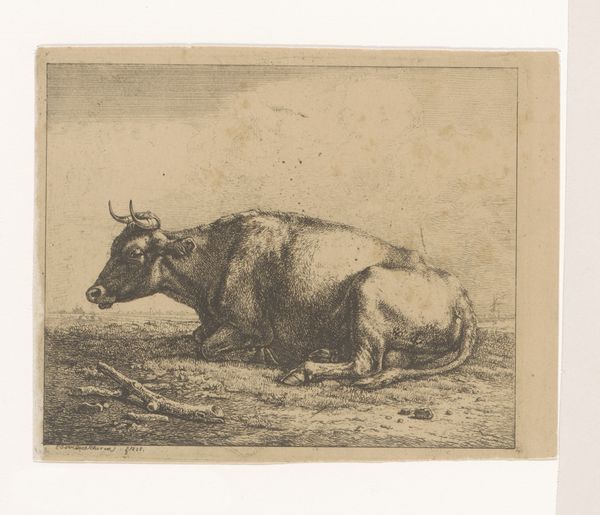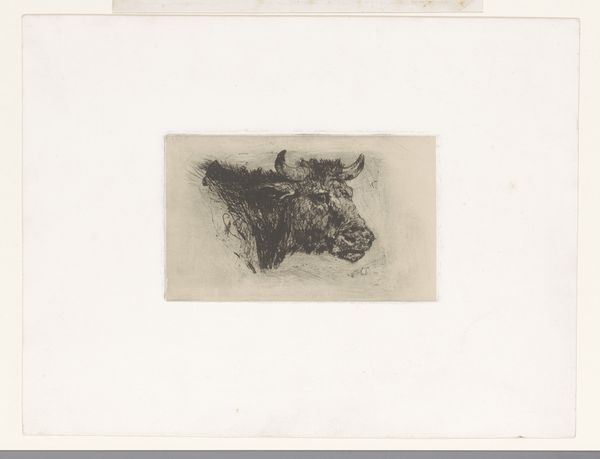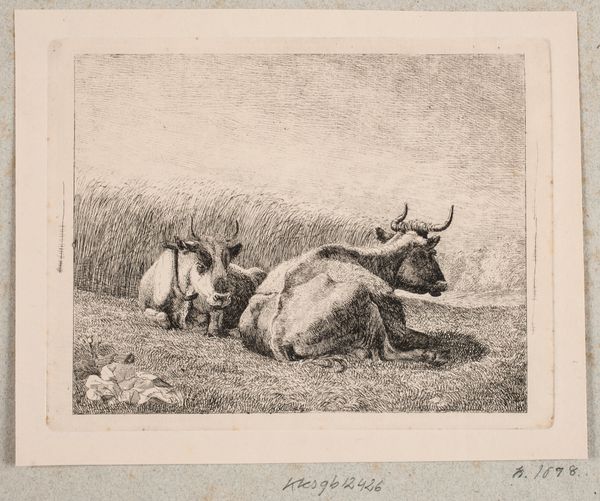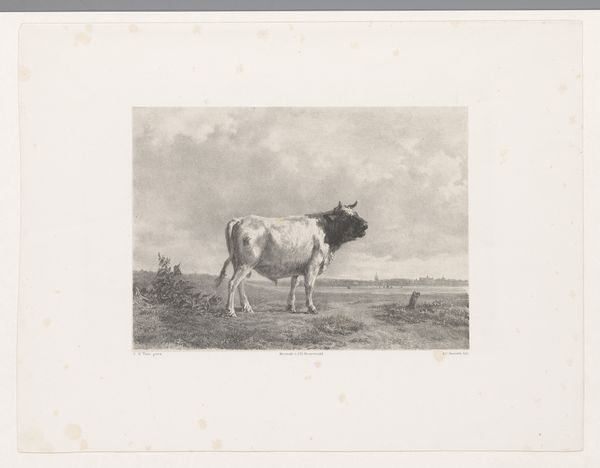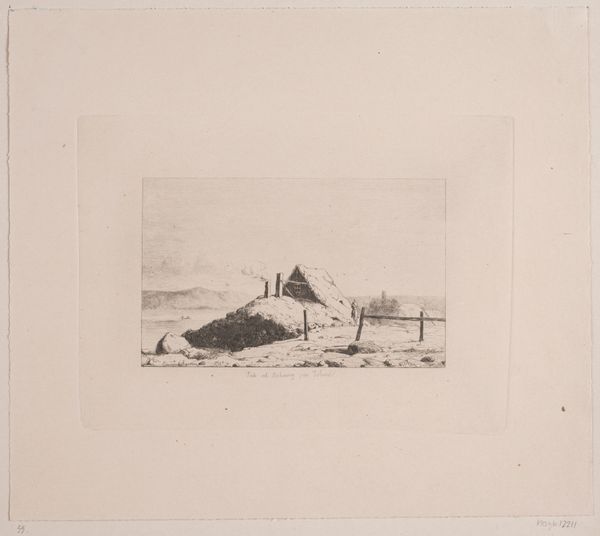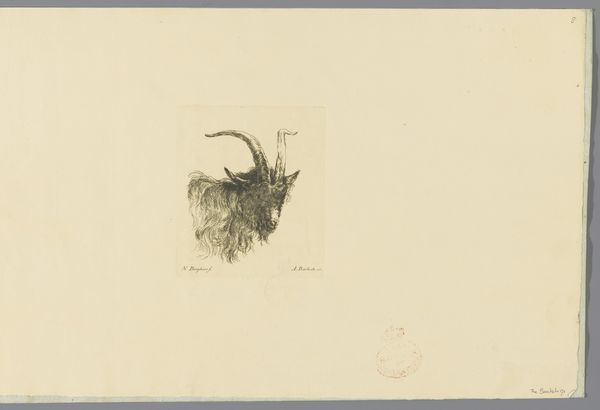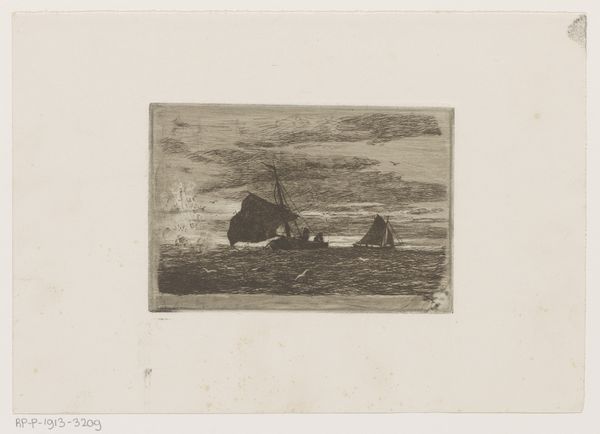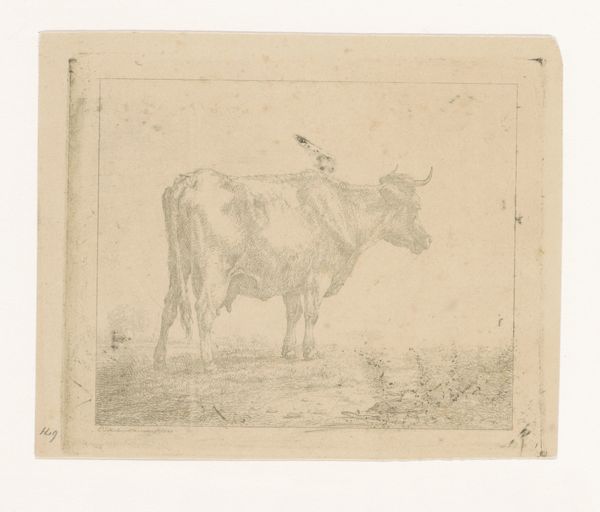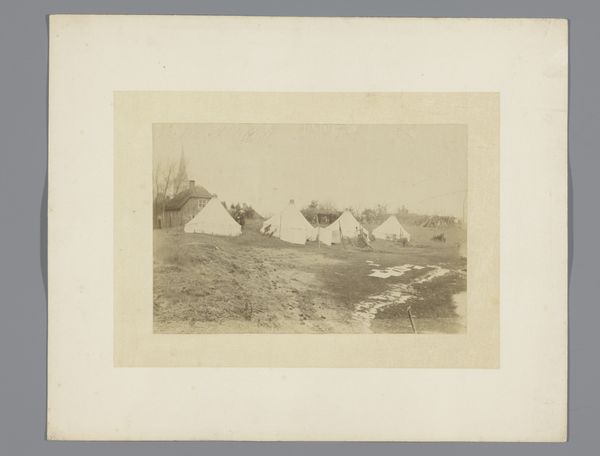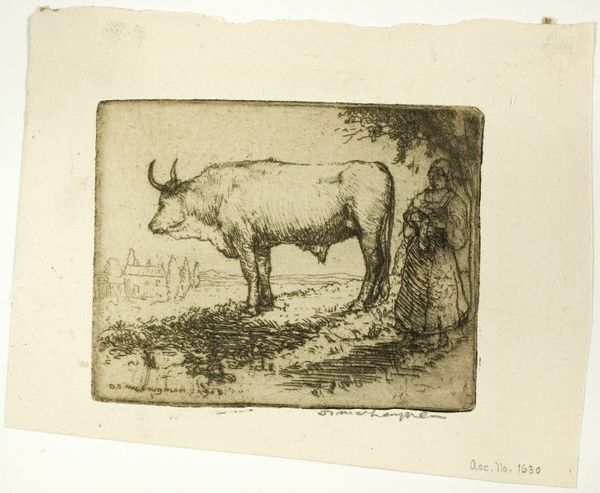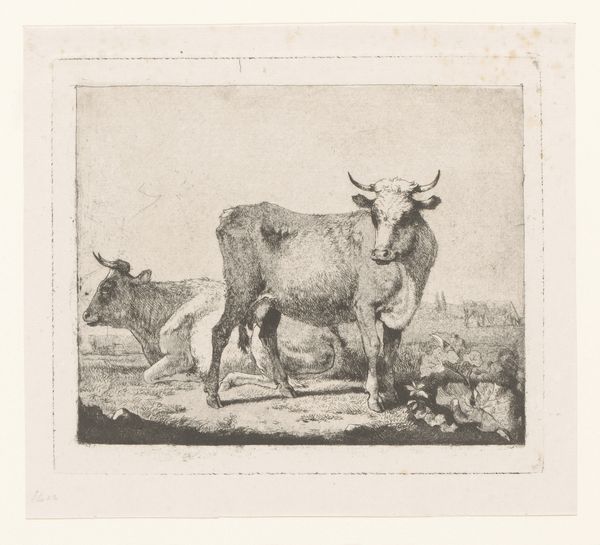
Dimensions: image: 18 x 24.2 cm (7 1/16 x 9 1/2 in.) mount: 30.5 x 38 cm (12 x 14 15/16 in.)
Copyright: CC0 1.0
Curator: Thomas Child's photograph, "Bronze Cow, Summer Palace, Peking," captures a serene monument. What's your initial take? Editor: It strikes me as stoic, almost melancholic. The bronze is weathered, suggesting age and exposure, and the setting seems desolate. Curator: Bronze cows in Chinese tradition often symbolize prosperity and agricultural abundance. This one, within the Summer Palace, likely served as a potent emblem of imperial power, tied to the land. Editor: And the labor involved in creating such a large bronze sculpture! The mining, smelting, casting—it speaks to the resources and workforce commanded by the emperor. Curator: The photograph itself, as a medium, also played a role, capturing and disseminating an image of imperial authority, both in China and abroad. Editor: Absolutely, the photograph functions almost like propaganda, circulating the image of this powerful symbol. Thinking about the cow itself, one can wonder about its making: lost wax or sand casting? Curator: A poignant reminder of a bygone era, carefully rendered in a precise medium. Editor: Indeed, both the object and the image carry layers of cultural and material history.
Comments
No comments
Be the first to comment and join the conversation on the ultimate creative platform.
